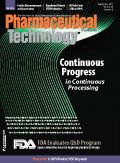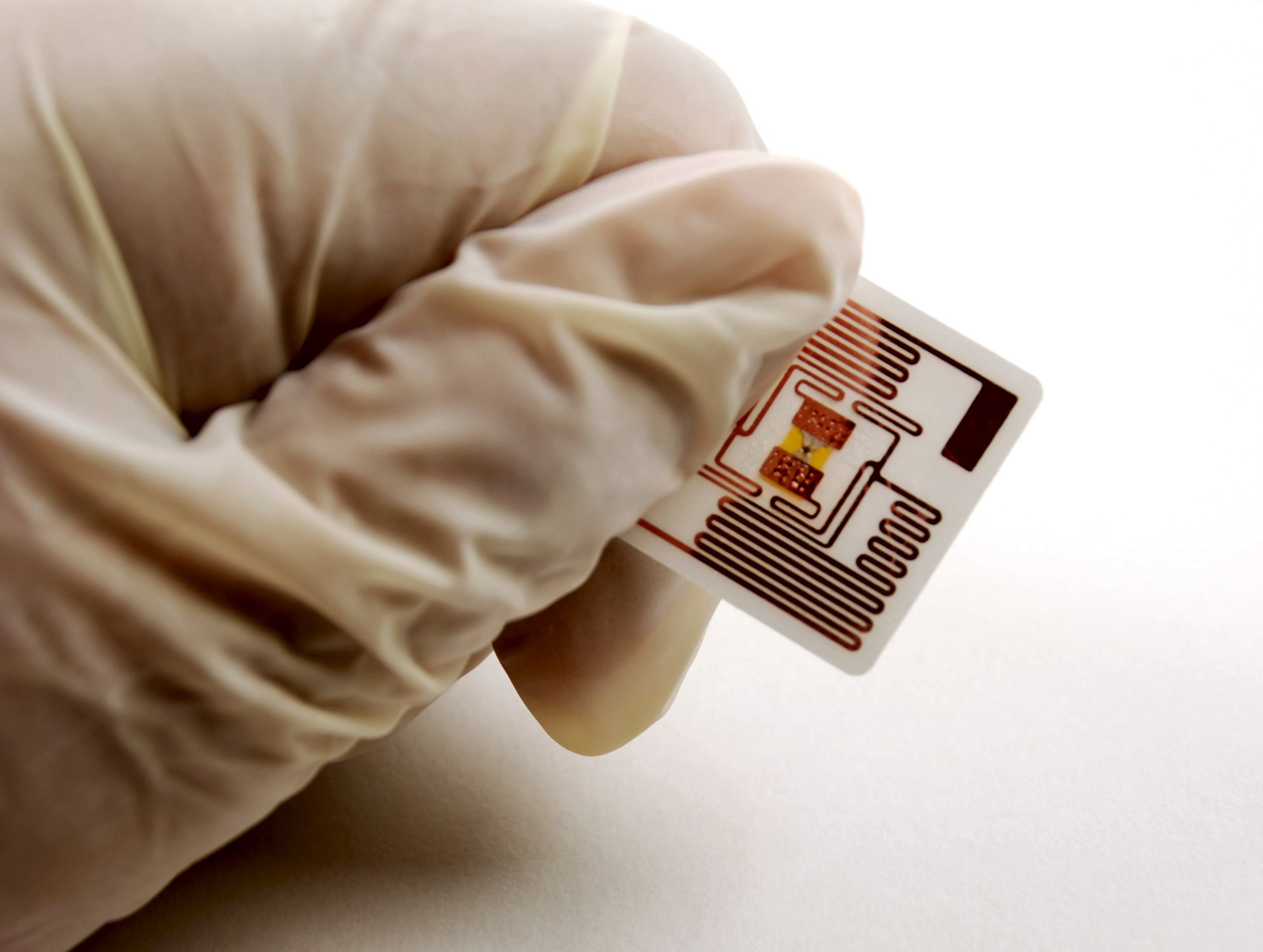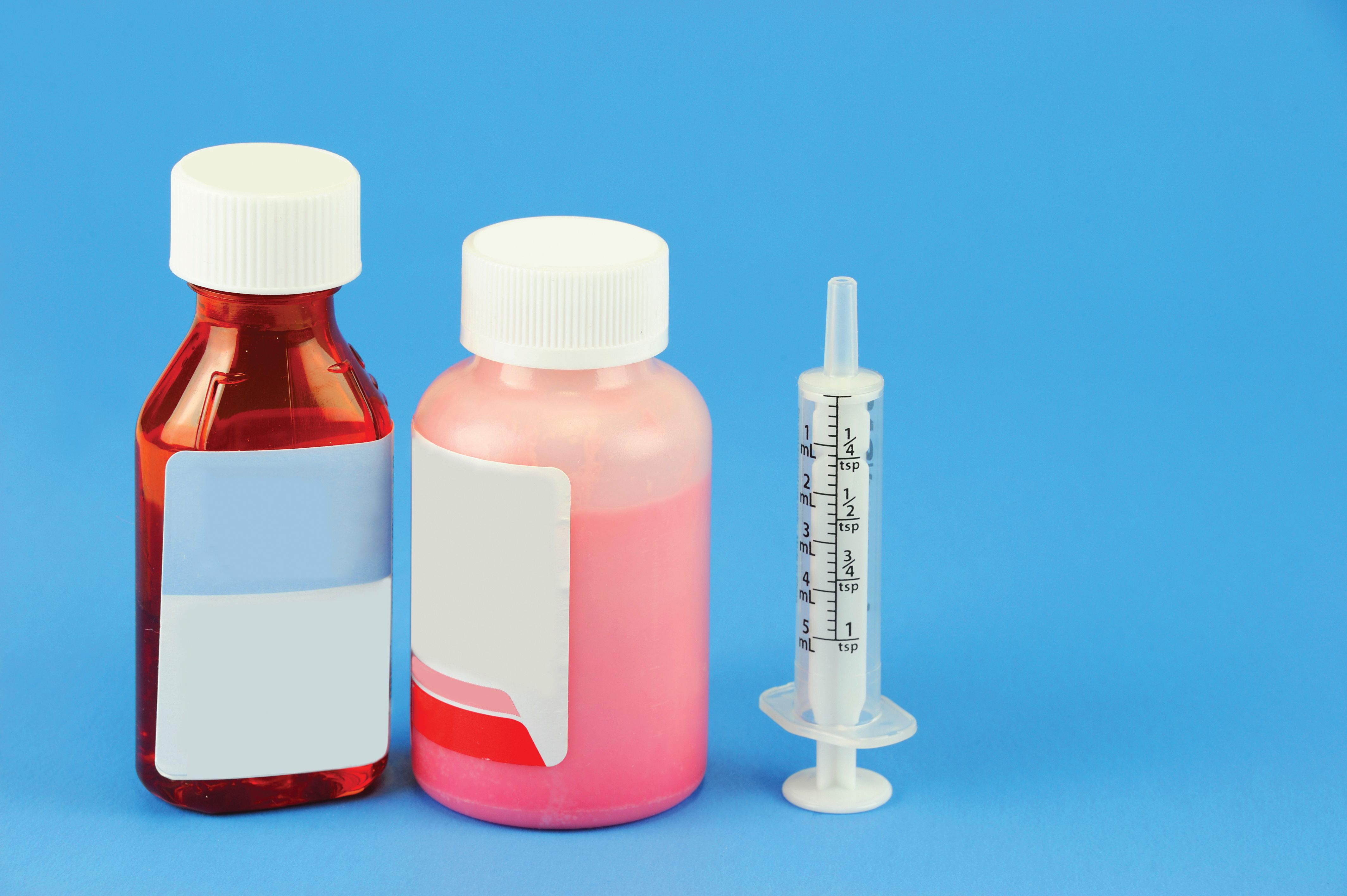News
Article
Pharmaceutical Technology
Continuous Progress in Continuous Manufacturing
Author(s):
Industry buy-in is increasing as pharma companies proceed with select projects and research.
The adoption of continuous manufacturing is proceeding at a step-wise pace in the pharmaceutical industry. Facing a need to modernize manufacturing to reduce costs, improve production economics, increase manufacturing flexibility, and gain better process understanding and control, and encouraged by regulatory support for continuous manufacturing as part of a quality-by-design (QbD) paradigm, pharmaceutical companies, academic–industry partnerships, and equipment vendors are moving forward with research, select projects, and product rollouts to enable continuous manufacturing.
Regulatory framework
Although full continuous manufacturing is still new to the pharmaceutical industry, other industries, such as oil, gas, petrochemicals, polymers, and food historically and currently operate in a continuous manufacturing mode to enable large-volume production at cost-effective levels (1). In the highly regulated pharmaceutical industry, moving to continuous from batch manufacturing requires acceptance of regulatory agencies to guide this transition. By its very nature, continuous processing lends itself to in-process monitoring and control and is compatible with FDA's process analytical technology (PAT) initiative and the agency's overall move to a risk- and science-based approach to pharmaceutical manufacturing and QbD principles. In its PAT guidance, FDA identifies "facilitating continuous processing to improve efficiency and manage variability" such as through small-scale equipment that eliminates scale-up issues, as a way to improve quality, safety, and efficiency (2, 3).
"There are no regulatory hurdles for implementing innovation in pharmaceutical manufacturing," said Moheb Nasr, director of the Office of New Drug Quality Assessment, Center for Drug Evaluation and Research at FDA and member of Pharmaceutical Technology's editorial advisory board. Nasr spoke at a panel discussion on continuous processing held at Interphex in March 2011. A key point made by Nasr is that current regulations do not distinguish between batch and continuous manufacturing. "The regulations are silent about the mode that must be used," he said. He emphasized that the term "batch" does not denote a mode of manufacturing but rather defines a specific quantity of a drug or other material that is intended to have uniform character and quality. The regulations specify: "A batch means a specific quantity of a drug or other material that is intended to have uniform character and quality, within specified limits, and is produced according to a single manufacturing order during the same cycle of manufacture." (4). Moreover, a "lot" refers to a "batch, or a specific identified portion of a batch, having uniform character and quality within specified limits; or, in the case of a drug product produced by continuous process, it is a specific identified amount produced in a unit of time or quantity in a manner that assures it having uniform character and quality within specified limits" (4). Thus, the definitions of a lot and a batch are both applicable to continuous processing.
"We have no specific regulations or guidance for continuous manufacturing, other than the definition of lot," said Nasr. "Nothing in the regulations or guidance prohibits continuous manufacturing. Continuous manufacturing, in the agency's view, is consistent with FDA's QbD efforts as it allows for a more modern manufacturing approach [and offers] great potential to improve assurance of quality and consistency of marketed drugs" he said. Nasr also said that part of the barrier to advancing continuous manufacturing is a reluctance to change. "The challenge we have is the lack of experience and the fear of the unknown." On a technical basis, he acknowledged that control strategies need to be further developed and adjusted to consider the dynamics of continuous processing.
The business case
Nasr also stressed the business case for continuous manufacturing given current challenges in batch manufacturing. He emphasized two key advantages: elimination of scale-up and related challenges, and increased manufacturing flexibility. He noted the value of applying platform technologies in a modular approach to meet evolving market product demand as a way to reduce manufacturing footprints, in terms of facilities and equipment, which would allow for more flexible operations, lower capital costs, and less work-in-progress materials.
Alex Chueh, director/team leader of the technology, science, and operations group of Pfizer's Global Supply Division, who also spoke at the Interphex panel, agreed. "From a new-product point of view, you really need to minimize the scale and take advantage of continuous manufacturing," he said. He pointed to improved manufacturing efficiency, reduced operating costs, reduced cycle time, lower inventories, a smaller manufacturing footprint, reduced capital expenditures as well as improved product quality and consistency by applying steady-state processes, QbD approaches, and real-time release. But he pointed to challenges as well, including the financial justification for investment in continuous processing projects in light of excess existing batch capacity, declining production volumes as result of maturing products, potentially more costly continuous processes, and the existence of already optimized and lean batch-manufacturing processes.
In addressing these challenges, Chueh outlined the criteria that Pfizer uses in evaluating a continuous processing project. He said the process must:
- Provide a wide range of throughputs/capacity to meet different product-volume requirements that meet the company's financial models
- Be easy to clean and allow for facile changeover for multiple product productions
- Minimize scale-up and technology-transfer complexity for new products
- Be modular, portable, and transferrable (i.e., plug-and-play approach and skid designs)
- Provide interchangeability for plug-and-play in different continuous processing unit operations for better processing and formulation flexibility
- Be adaptive and amenable to continuous quality verification and real-time release
- Improve specific product quality and functionality (e.g., coating uniformity)
- Require a smaller manufacturing footprint with lower capital costs
- Be hybrid in design (i.e., the process can be used either in a batch or continuous mode).
Project work
Using these proof-of-concept principles, Chueh offered several examples of specific projects in continuous solid-dosage processing at Pfizer. The first was a continuous dry-granulation process that was implemented as a multiproduct platform at a cost of $16 million, which included $7 million for a new building housing the operations, and which produced $4 million in annual cost savings. The dry-granulation process consisted of several steps: meter feeding of excipients and lubricants, in-line blending, roller compaction, milling, and further in-line blending. The equipment train used in continuous dry granulation is not dissimilar to the direct compression process with the addition of roller compaction and milling steps, which is the most straight forward type of continuous manufacturing process for solid oral dosage forms, according to John Groskoph, senior director, global chemistry manufacturing and controls, also at Pfizer.
"From a PAT perspective, at a preselected processing point, we identified all of the critical process parameters (CPPs) as well as critical quality attributes (CQAs) that needed to be measured and controlled," said Chueh. In continuous dry granulation, raw material variability, blend uniformity, compaction, and particle size are the key CQAs. PAT applications, such as near infrared (NIR) and focused beam reflectance measurement (FBRM, for particle characterization) were developed to ensure good measurement, monitoring, and control with data fed into a supervisory control and data acquisition (SCADA) system. For blend uniformity, Pfizer developed an on-line PAT measurement system to sample, measure, and monitor the blend potency and uniformity in a continuous mode. Further, a three-way diverting system that interfaced with the on-line NIR was developed to validate rejection of detected nonconforming materials. A more robust on-line blend potency sampling and measurement system is currently being evaluated.
Pfizer applied a similar proof of concept approach for developing a continuous high-shear, wet-granulation–fluid-bed drying process. The $13-million project was for a high-volume product with an estimated annual savings of $7 million. Pfizer integrated metered feeding, blending, continuous granulation, continuous drying, and final blending operations into a single-pass, first-in–first-out system. The company worked with an equipment vendor to develop the continuous granulator and continuous dryer aspects. In this process, the continuous wet granulator and dryer units operate more like a tunnel rather than a sealed chamber. Dry powder can be fed into the entrance, fluidized, and sprayed with granulation solution in the initial portion of the unit. As the moist powder travels through the granulation unit, it forms granules that move onto the drying unit and begin the drying phase. The now dry granulate passes through the exit and onto further continuous blending before being collected into an intermediate bulk container.
Chueh also pointed to the company's interest in developing continuous direct-compression processes. "We are hoping that in the future we have more direct compressible formulations and processes because it is the most effective, simplest and, easiest process. But it's not easy to develop based on API characteristics," he said. In using the same proof-of-concept criteria for its continuous processing operations, Pfizer integrated multiple loss-in-weight feeders, used a proprietary, in-house developed continuous mixer, followed by lubrication, and on-line NIR monitoring of the blend potency and uniformity during the blending process. The project's investment was $3.5 million with a projected annual savings of $1 million.
In developing these continuous manufacturing processes, Chueh outlined some specific technical considerations. "Since blend uniformity is always a critical quality attribute, the feeding accuracy and precision as well as the in-line blending and mixing efficiency became one of the [key] technical focus areas." He also emphasized the importance of managing start-up and shutdown losses. "One of the disadvantages of a continuous process is the start-up and shutdown losses, so we have minimized [those] as much as we can," offering as an example the company's work with a vendor to develop a second-generation continuous coater that has minimal start-up and shutdown losses. Achieving more consistent and uniform spraying and drying conditions in the continuous coating zone were other key focus areas during the development of the continuous coater, he added.
Process understanding and control
Despite the challenges, some feel that the divide between batch and continuous manufacturing can and should be overcome. "What we have now is not a batch paradigm," said Fernando Muzzio, professor of chemical engineering at Rutgers University, president of Mixing Consultants, and a member of Pharmaceutical Technology's editorial advisory board. "We mix in batch, we roller-compact continuously, we then lubricate in batch, and then tablet or capsule-fill continuously. Then we coat in batch and package continuously." Muzzio, who also spoke at the Interphex panel discussion, is center director of the Engineering Research Center For Structure Organic Particulate Systems, a multi-university consortium consisting of Rutgers University, Purdue University, the New Jersey Institute of Technology, and the University of Puerto Rico at Mayagüez. The center, which is funded by National Science Foundation and industrial partners, including 35 pharmaceutical manufacturers and equipment producers, is involved in research and development for continuous processing.
To move to continuous processing, Muzzio noted even the simplest route, continuous direct compression of tablets, requires many measurement points and data streams (e.g., feed rate, blend uniformity, humidity, shear, compression, thickness) that need to be interpreted in context. The key, he said, is building a predictive model that can relate all of the measurement points to the process variables to control product quality. Full closed-loop automated control is a requirement to achieve reliable performance. For example, commercial technology for monitoring powder density in real time is an issue, and there is currently nothing that is "plug and play," he said. Muzzio's team has continuous direct-compression and continuous dry-granulation lines operating at the center and is currently working on developing a continuous wet-granulation line.
The feasibility of developing continuous processes for specific unit operations requires advances in pharmaceutical equipment design and operation. "To make continuous mixing, granulation, and drying possible for small-scale operations, such as in the pharmaceutical industry, systems needed to be developed with very limited or no start-up and shutdown waste that reach steady state in an extremely short time," says Kris Schoeters, product manager of continuous processing at GEA Pharma Systems, a pharmaceutical equipment provider. He points to the company's ConsiGma continuous granulation, drying, and tableting line as an example. Designed in a modular way, the system consists of a patented twin-screw granulator, a segmented continuous fluid-bed dryer, and granule-conditioning unit to prepare dry granules for the tablet press.
"Each module has been optimized to achieve steady state very rapidly (sometimes within seconds) and to ensure plug-flow of the product throughout the system. The whole system is controlled by an advanced process control system; all modules have to communicate with each other seamlessly to form an intelligent-control system with feed-forward and feedback loops. The control system is, in fact, one of the major design challenges for continuous processing," says Schoeters.
Another challenge is ensuring plug-flow while maintaining consistent mixing characteristics. The twin-screw granulator, for example, contains "tightly intermeshing corotating twin screws and kneading elements, which provides a self-cleaning and self-emptying effect and, hence, ensures real plug flow," says Schoeters.
On the horizon
Developing continuous processes for specific unit operations and coupling them is one way to achieve continuous manufacturing. In this approach, drug-substance manufacturing and solid-dosage manufacturing are separate, and specific unit operations in solid-dosage manufacturing are developed as continuous processes and coupled. A more holistic or end-to-end approach is being considered by Novartis, through a 10-year, $65-million collaboration that the company formed with the Massachusetts Institute of Technology (MIT) in 2007, with the goal of developing a fully integrated platform for continuous manufacturing that would integrate drug-substance manufacturing with finished drug-product manufacturing.
Bernhardt Trout, director at the Novartis–MIT Center for Continuous Manufacturing and professor of chemical engineering at MIT, explained that the focus of the collaboration is not trying to redesign the process unit by unit, but rather to look at API and finished-drug product manufacturing as a whole. To that end, the center is researching and developing new technologies, including applying different chemistries to produce a desired API. Thus far, the center has developed a prototype, bench-scale integrated continuous manufacturing platform for API and solid dosage manufacturing. The fully integrated, end-to-end system has been run several times, and steady-state runs for up to a week at a time were planned for August 2011. The process and its control system will be used as a research tool to test start-up and shut-down strategies and to introduce new technologies for integration and further testing through 2011 and beyond.
References
1. E. Greb, Equipment and Processing Report, Mar. 17, 2010, PharmTech.com/continuousquest, accessed Aug. 22, 2010.
2. FDA, Guidance for Industry: PAT—A Framework for Innovative Pharmaceutical Development, Manufacturing, and Quality Assurance (Rockville, MD, September 2004).
3. A. Pellek and P. Van Arnum, Pharm. Technol.9 (3), 52–58 (2008).
4. Code of Federal Regulations, Title 21, Food and Drugs, Part 121, Sec. 210.3, www.accessdata.fda.gov/scripts/cdrh/cfdocs/cfcfr/CFRSearch.cfm?fr=210.3, accessed Aug. 23, 2011.
Newsletter
Get the essential updates shaping the future of pharma manufacturing and compliance—subscribe today to Pharmaceutical Technology and never miss a breakthrough.






